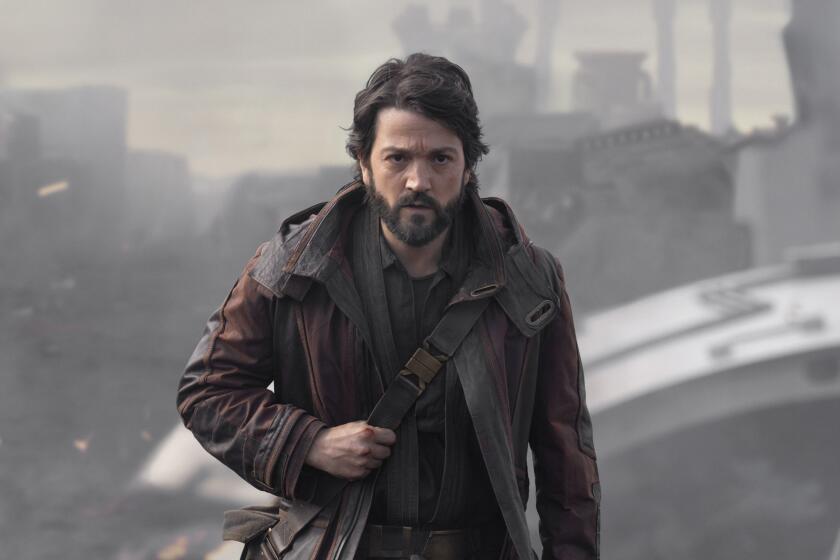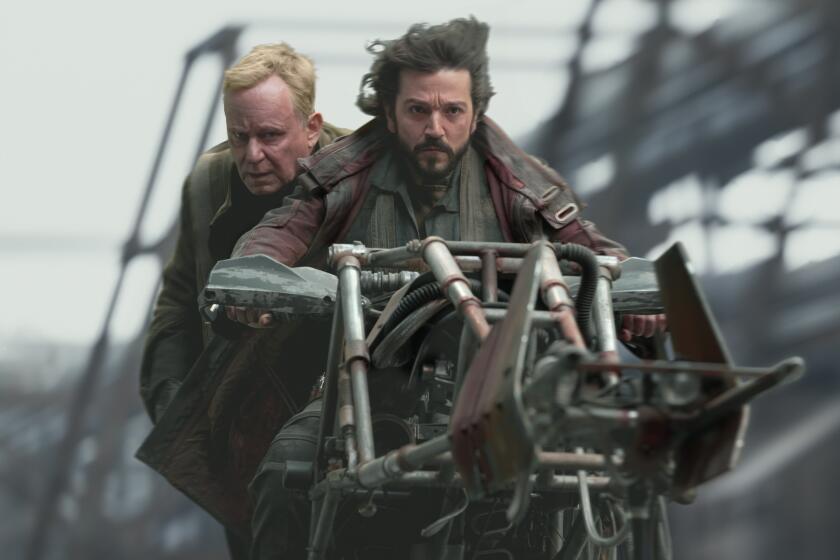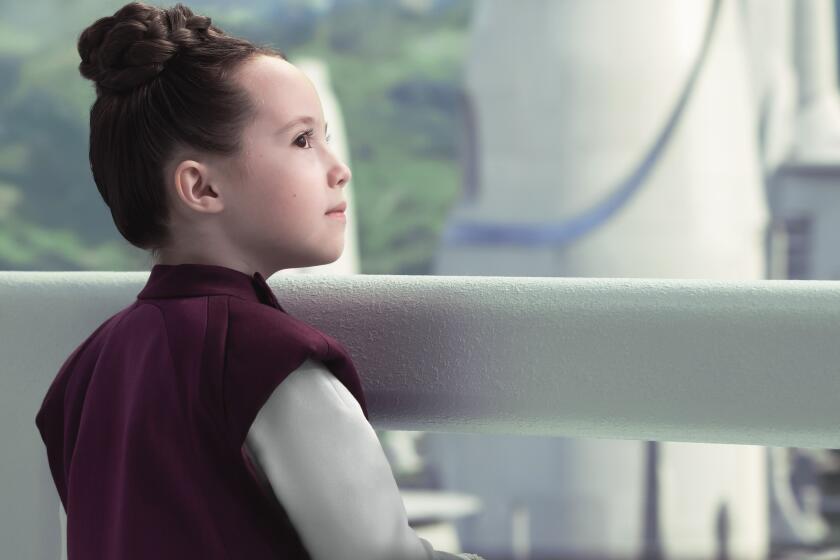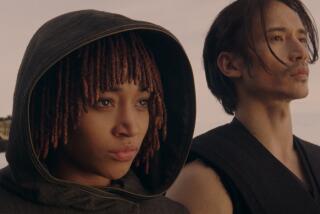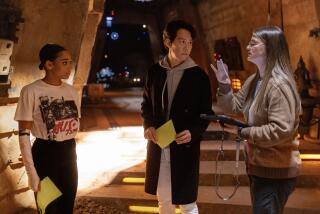Commentary: ‘Star Wars’ has always been political. ‘Andor’ made it must-see TV
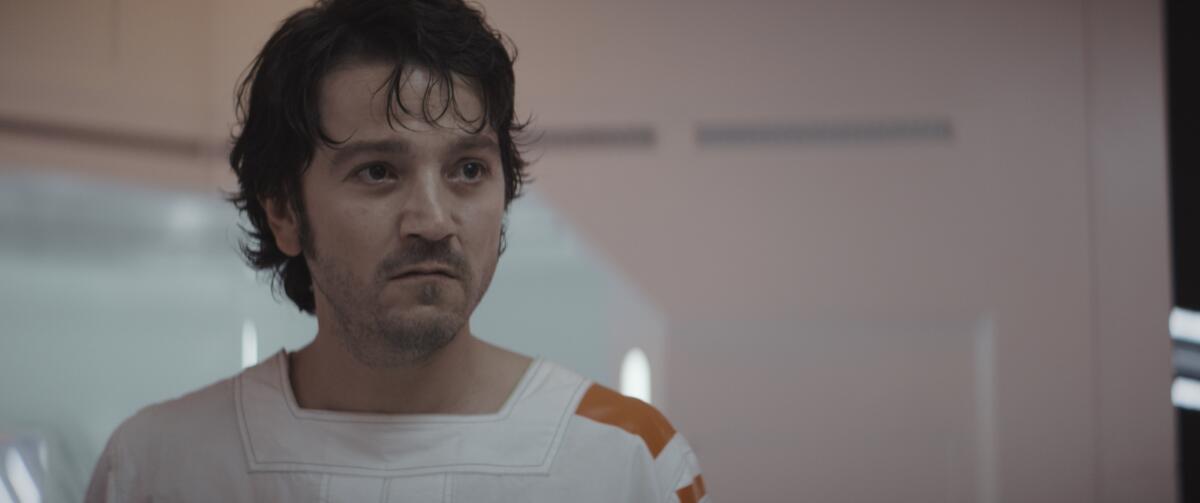
- Share via
Despite what some people — and at least one giant media company — might have you believe, “Star Wars” has always been political.
“It is a period of civil war,” explains the opening scrawl of George Lucas’ 1977 space opera, now formally known as “Star Wars: Episode IV – A New Hope.” The original trilogy of films goes on to show how a farm boy with special powers, a gruff but loyal smuggler and a courageous and capable princess pull off the seemingly impossible and help a scrappy rebellion take down an galactic authoritarian regime.
“Andor,” the Disney+ series that wraps its first season on Wednesday, tells the story of how Cassian Andor (Diego Luna) transforms from disaffected, self-centered thief to committed resistance fighter willing to die for the cause. Eschewing many of the familiar tropes and set pieces associated with the franchise, the series has pushed “Star Wars” storytelling to new heights.
‘Andor’ showrunner Tony Gilroy talks about his Disney+ ‘Star Wars’ series, Diego Luna, creating Syril Karn and Dedra Meero and what to expect in Season 2.
On paper, “Andor” is standard Disney+ fare that the franchise-wary might not consider particularly compelling. It’s a prequel series to “Rogue One” (2016), itself a prequel set immediately before the events of “A New Hope.” Unlike the core film series known as the Skywalker Saga, “Rogue One” doesn’t focus on any Jedi or Chosen Ones with the weight of the galaxy on their shoulders. It instead tells the story of a team of rebels who embark on a rogue mission to steal the schematics for the Death Star to keep the Rebellion’s hope of defeating the Galactic Empire alive.
As Andor explains in the movie, “Rebellions are built on hope.”
Jedi, Sith and the Force are similarly absent in “Andor.” It’s the first “Star Wars” story that takes time to depict what life is like for ordinary people living under Imperial rule and what leads them to accept or resist the increasingly oppressive, fascist regime. The show is an interrogation of power and morality beyond the simplified (if undeniably exciting) struggle between the Light and Dark Side.
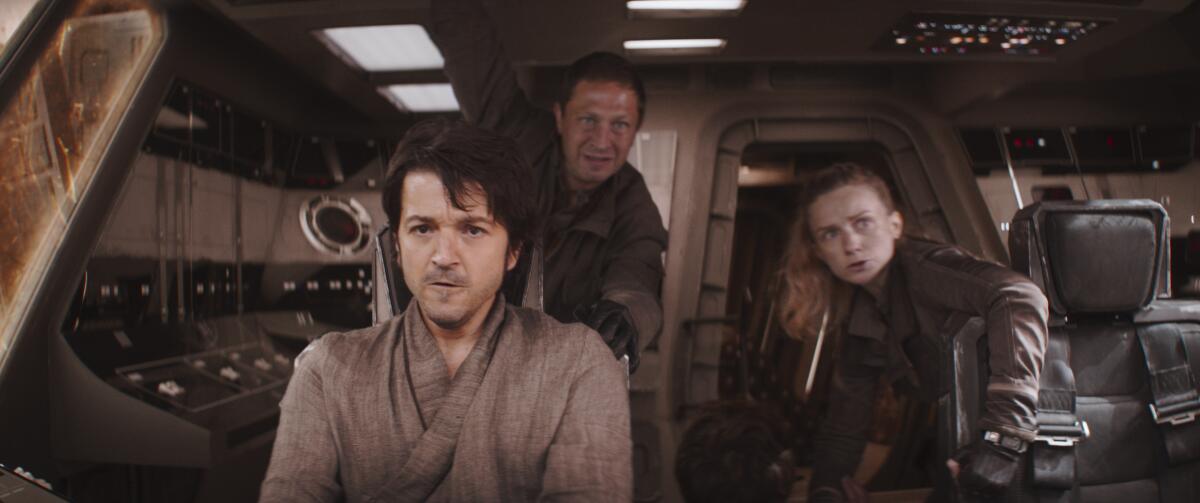
This is not so surprising when you look at “Andor’s” credits. Showrunner Tony Gilroy, who also worked on “Rogue One,” is best known for his work on “Michael Clayton” (2007) and the “Bourne” film series. The writing staff also includes “House of Cards” creator Beau Willimon and “The Americans“ writer/producer Stephen Schiff. Examining the corrosive complexity of political intrigue is a foundational part of “Andor’s” creative DNA.
It’s also no secret that Lucas took inspiration from history and real-life authoritarian regimes in developing “Star Wars.” But because the films are also meant to be accessible to kids, some of the politics are diluted — to the point that some misinformed toxic fans either don’t realize or care that they sometimes behave in ways that align them with the Dark Side.
“Andor,” however, presents the galaxy far, far away as one made up of many different shades of gray, underscored throughout by its stellar cast. Heroes of what will eventually become the Rebel Alliance at times make morally suspect decisions. And as in any workplace, ambition and office politics affect employees of the Galactic Empire, who as individuals tend to be flawed rather than simply evil. It’s a nuance that’s hard to convey through the rigid dichotomy of Jedi and Sith.
What is “Andor”? Who is Cassian Andor? Everything you need to know before watching the new series, premiering Wednesday on Disney+.
But the absence of Jedi and the Force does not mean “Andor” is not a good “Star Wars” story. The world-building of the series has been impressive, introducing new planets, customs and (blue) foods. While the series has predominantly featured standard humanoid characters instead of more visually distinct alien species, they haven’t been completely absent. “Andor” also introduces the charming boxy droid B2EMO, who occasionally stutters.
Eagle-eyed “Star Wars” fans will have noticed “Andor’s” Easter eggs, particularly in the antique shop that serves as a front for secret rebel meetings. And while “Andor” does not require the audience to have any real “Star Wars” knowledge outside of the series, those who have watched “Rogue One” will catch moments that foreshadow Andor’s future or add additional context to the events of the film. The series also features familiar “Rogue One” faces besides Andor in Mon Mothma (Genevieve O’Reilly), a senator waging a secret fight against the Empire, and the insurgent Saw Gerrera (Forest Whitaker).
By layering sharp, thrilling political drama atop the franchise’s well-known iconography and backstory, “Andor” has achieved what remains a rarity for Marvel and Star Wars television, “WandaVision” and baby Yoda excepted: crossover success. I’m the first to admit I love lightsaber duels and stories about Jedi. In fact, I’m sitting next to a lightsaber and holocron as I write this (and don’t call them toys). But I’ve also been waiting for more “Star Wars” stories about the ordinary people who are driven to do extraordinary things, because we can’t all be chosen ones. What “Andor” has proved is that “Star Wars” is malleable. It deserves room to grow into genres tailored to television and themes tailored to adult audiences, not just translate the conventions of the central film saga into hourlong episodes.
‘Star Wars’ has long been a franchise fixated on the Skywalker men. The latest entry in the canon finds hope, and emotional resonance, in Leia Organa.
Prior to “Andor,” the live-action “Star Wars” shows have tended to dip into the well of nostalgia for their stories. And standouts like “The Mandalorian” have shown that this reverence for “Star Wars” can be harnessed to craft a new, compelling story and welcome new fans. But as potent as such sentiments can be, they’re also limited and volatile. Nostalgia relies on people’s personal “Star Wars” memories for success. Reframing aspects of existing lore may be meaningful to some while alienating others. Even worse, it could lead to dull repetition. Just look at the response to the sequel trilogy.
“Andor” is as much a challenge to that nostalgia as it is to the belief that “Star Wars” is, or ever was, apolitical. It makes a familiar world dangerous again and returns the franchise, to quote the old adage about journalism, to one of its original themes: Comfort the afflicted and afflict the comfortable. Which may explain not only why newcomers and skeptics have joined the bandwagon, but why longtime fans love it too: “Andor” shows that “Star Wars” can still surprise us, nearly half a century on.
‘Star Wars: Andor’
Where: Disney+
When: Any time
Rating: 14+ (may be unsuitable for children under the age of 14)
More to Read
The complete guide to home viewing
Get Screen Gab for everything about the TV shows and streaming movies everyone’s talking about.
You may occasionally receive promotional content from the Los Angeles Times.
